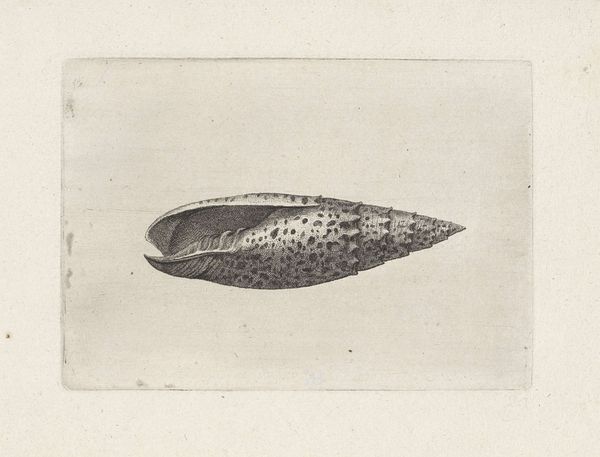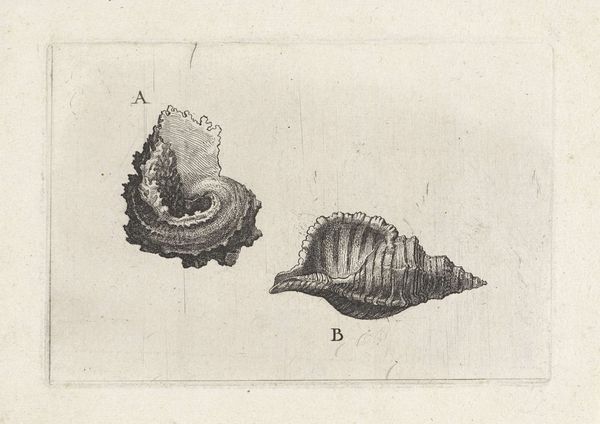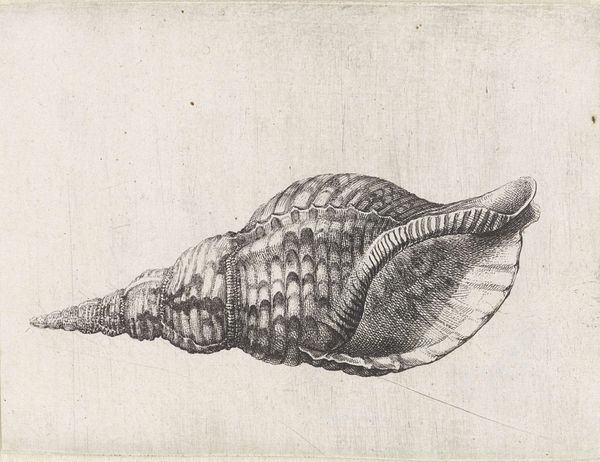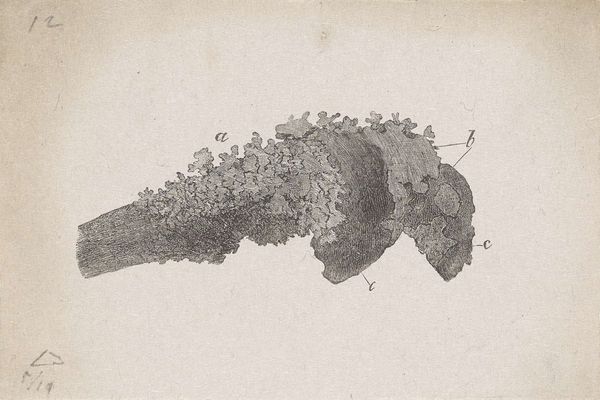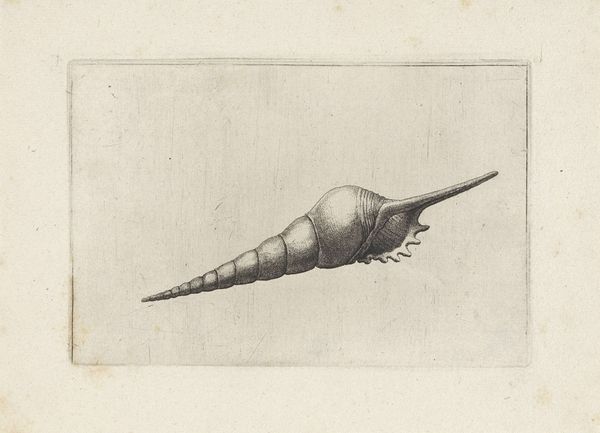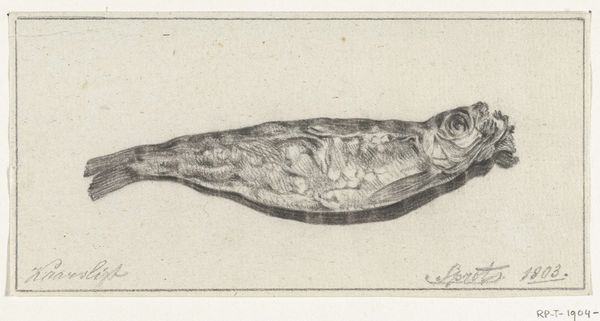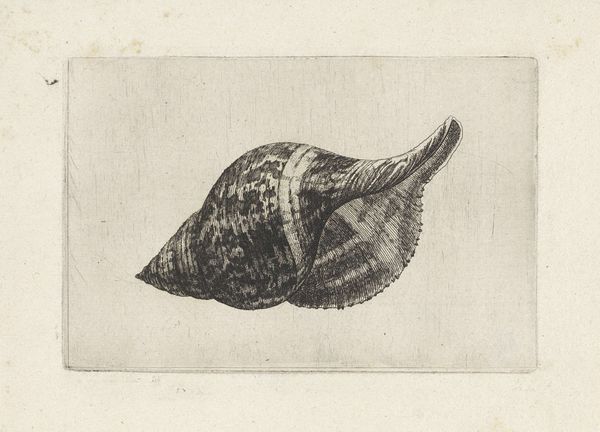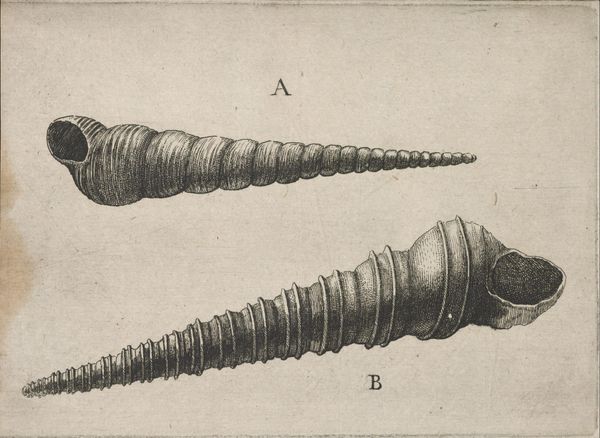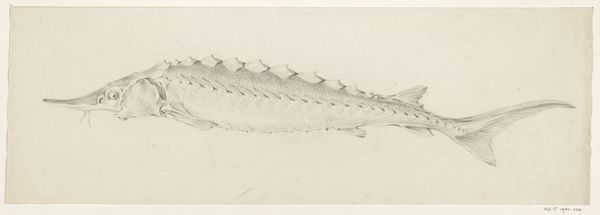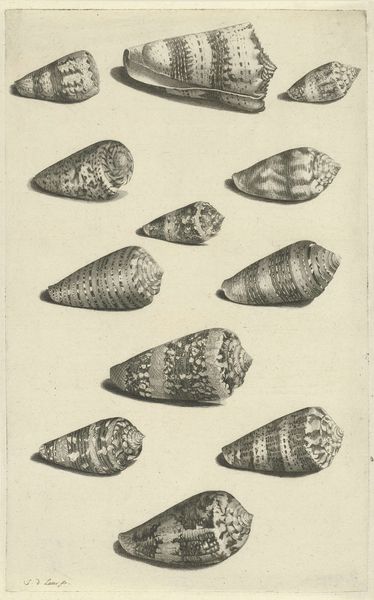
Schelpen, mitra cardinalis (A) en terebra subulata (B) 1644 - 1652
0:00
0:00
wenceslaushollar
Rijksmuseum
print, engraving
#
baroque
# print
#
old engraving style
#
line
#
history-painting
#
engraving
Dimensions: height 96 mm, width 143 mm
Copyright: Rijks Museum: Open Domain
Editor: This print by Wenceslaus Hollar, made between 1644 and 1652, depicts two seashells. The title is quite descriptive: "Schelpen, mitra cardinalis (A) en terebra subulata (B)". I'm immediately struck by how precise and detailed the engraving is, especially considering its age. How do you interpret the imagery in this work? Curator: The seashells themselves carry layers of meaning. They’re naturalia, objects of the natural world, yes. But in the 17th century, shells like these were also potent symbols of wealth and worldly exploration, particularly relevant given the Netherlands' extensive maritime trade and colonial ambitions. Note also the seemingly objective "A" and "B" markings. Editor: So, these shells were more than just pretty objects. How would their display relate to the continuity of symbols? Curator: Exactly! They functioned almost like trophies. Their presence alluded to global reach, scientific curiosity, and, of course, conspicuous consumption. Hollar’s meticulous rendering also suggests a scientific study, reflecting the burgeoning field of natural history. The "line" style further suggests a desire for clarity, for a transparent presentation of observed phenomena, reflecting, in its own way, human attempts to categorise and know the world. Does the neutral background give you pause? Editor: It’s interesting. It almost strips away context. So, the shells become specimens. It seems they represent the start of classifying and claiming the world, doesn't it? I learned to appreciate how objects transform from simple items into symbols. Curator: Precisely. Every image whispers something about who we are. The continuity resides in that echo.
Comments
No comments
Be the first to comment and join the conversation on the ultimate creative platform.


